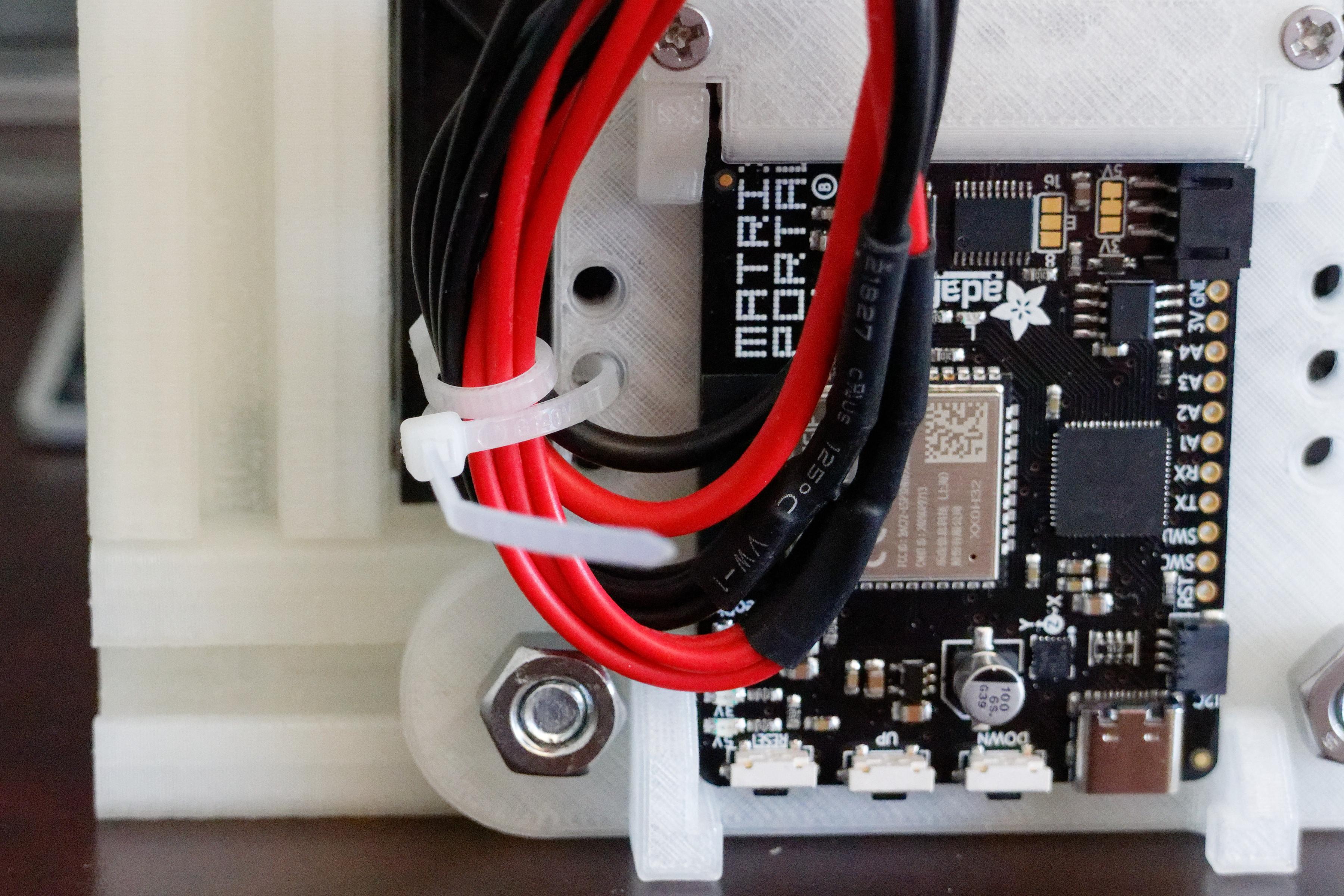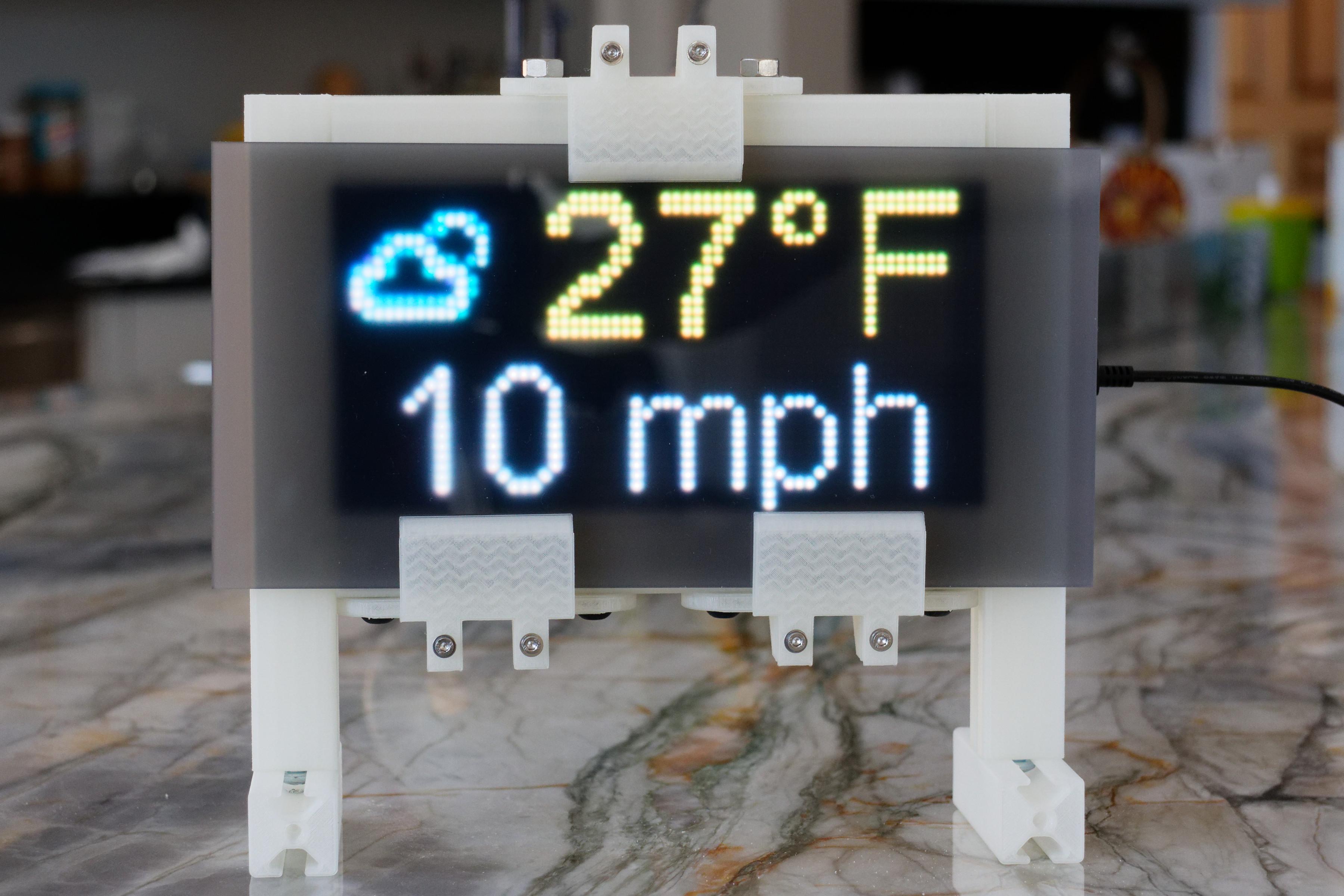A Simple 3D Printed Frame for an RGB LED Panel
by NotLikeALeafOnTheWind in Circuits > LEDs
3642 Views, 33 Favorites, 0 Comments
A Simple 3D Printed Frame for an RGB LED Panel




Unlike our instructable on aluminum frames for RGB LED panels( https://www.instructables.com/Simple-Extruded-Alu...), which is scalable to almost any size display, this design is targeted at a display using one specific type of panel (191mm x 96mm). The link to the one we used is below.
https://www.adafruit.com/product/2279
The advantages to this framing solution are:
- It requires NO special hardware. It requires NO cutting metal. It requires NO measuring. It requires NO special bolts, nuts or wrenches. There is no drilling. It can be assembled using machine screws from any hardware store or Home Depot.
- It is 3D printed, so you can choose the color and texture of the filament you use.
- It is really simple. There are only six pieces and six screws in the basic frame, plus two more screws to mount the panel brackets, and two screws to mount the MatrixPortal bracket.
For a processor we used an Adafruit MatrixPortal. ( https://www.adafruit.com/product/4745 )
Supplies
Machine Screws (Qty. 6) for attaching beams 1/4-20 x 1/2
Screws and nuts (Qty. 2 each) for attached matrIxportal mount 1/4-20 x 1/2 and 1/4 - 20 nut
Screws and nuts (Qty. 2 each) for attaching the panel mounts 1/4-20 x 1/2and 1/4 - 20 nut
Screws for attaching the panel to mount (Qty. 2) M3 x 20mm
Print the Parts





Print two beams for each of these files:
2x Vertical beams
2x Leg beams
2x Foot beams
Print two of the NO magnet panel holders.
Print a mount for the MatrixPortal.
https://www.thingiverse.com/thing:4728088
A quick side note about printing, also noting this is from our experience, with our printers. The best way to print a beam is on end, printing to a vertical configuration. The thread for the screws at both ends come out more usable and we never did figure out a good way of using supports in the horizontal configuration. While we were working on https://www.instructables.com/A-Simple-3D-Printed-... we found that beams over six inches (152.4mm) had a nasty habit of separating from the build plate near the end of a print when you print them individually. The work-around for us was to print several together in a bundled tube construction. But as we said, that's our printers. You may have a different experience.
A Word About Screws and Nuts.



The ends of the beams are taped for a 1/4-20 thread. The "budget" generic machine screws (such as those found at Home Depot) have a rounded edge that makes them perfect for sliding in the channels of a 3D printed beam.
The parts that have a hole in them can also accept a 1/4-20 threaded machine screw, but with a tighter tolerance. It may be necessary to deburr the hole so that the machine screw can move freely in the hole. This can be done by using a deburring tool, a screwdriver blade, or the screw itself. It is important that the screw moves freely in the hole.
Alternately, you can use a T-nut.
A Word About Assembly
There is no exact order to the assembly, there are instead a series of tasks that can be accomplished in whatever order you care to do. The fun of this design is that it can be taken apart and reassembled with ease.
So, no apologies if the photos show steps that are not yet completed.
Assembly









The vertical beams have a screw placed in each end. The leg beams have a screw placed in the bottom. (The bottom is the end of the beam with two holes)
Attach the beams together as shown in the pictures. Tighten firmly, but don't torque it down hard.
Apply the Panel Retention Brackets



The tolerances are tight enough that the LED panel can be held in place by friction. If you are going to be using some kind of diffuser over the panel, you probably want to add the panel mounting clips.
The bracket attaches to the LED panel with an M3 20-25mm bolt.
Mount the Matrix Portal and Wire It In.



Install the Extension Cable



This step is best done after installing the MatrixPortal mount.
Mount the RGB Led Panel




Optional - Diffuser Mounting Clips






Print four of the clips for mylar or paper. A thick panel of acrylic many only require two clips on the bottom and one on the top.
The clips can be found at: https://www.thingiverse.com/thing:4778126
The clips are held together by two 25mm M3 bolts and washers.
You Are Done

Enjoy, and rate this Instructable
Other Branches in the Road.
One of the many things we love about extruded channels is the easy which you can modify it or add to a project.
On of the easiest next step it to upgrade the processor. We used an Adafruit MatrixPortal in this example.
If you want to take things to the next level, there are many other options for processors. Adafruit makes a great line of shields and hats for different processors. Our favorite is an Adafuit hat for the raspberry pie and Henner Zeller's amazing library. (https://github.com/hzeller/rpi-rgb-led-matrix )
There are also a large array of sensors and sensor mounts that are compatible with extruded channels.